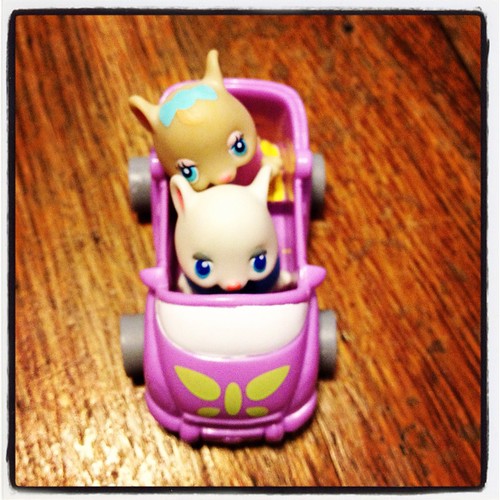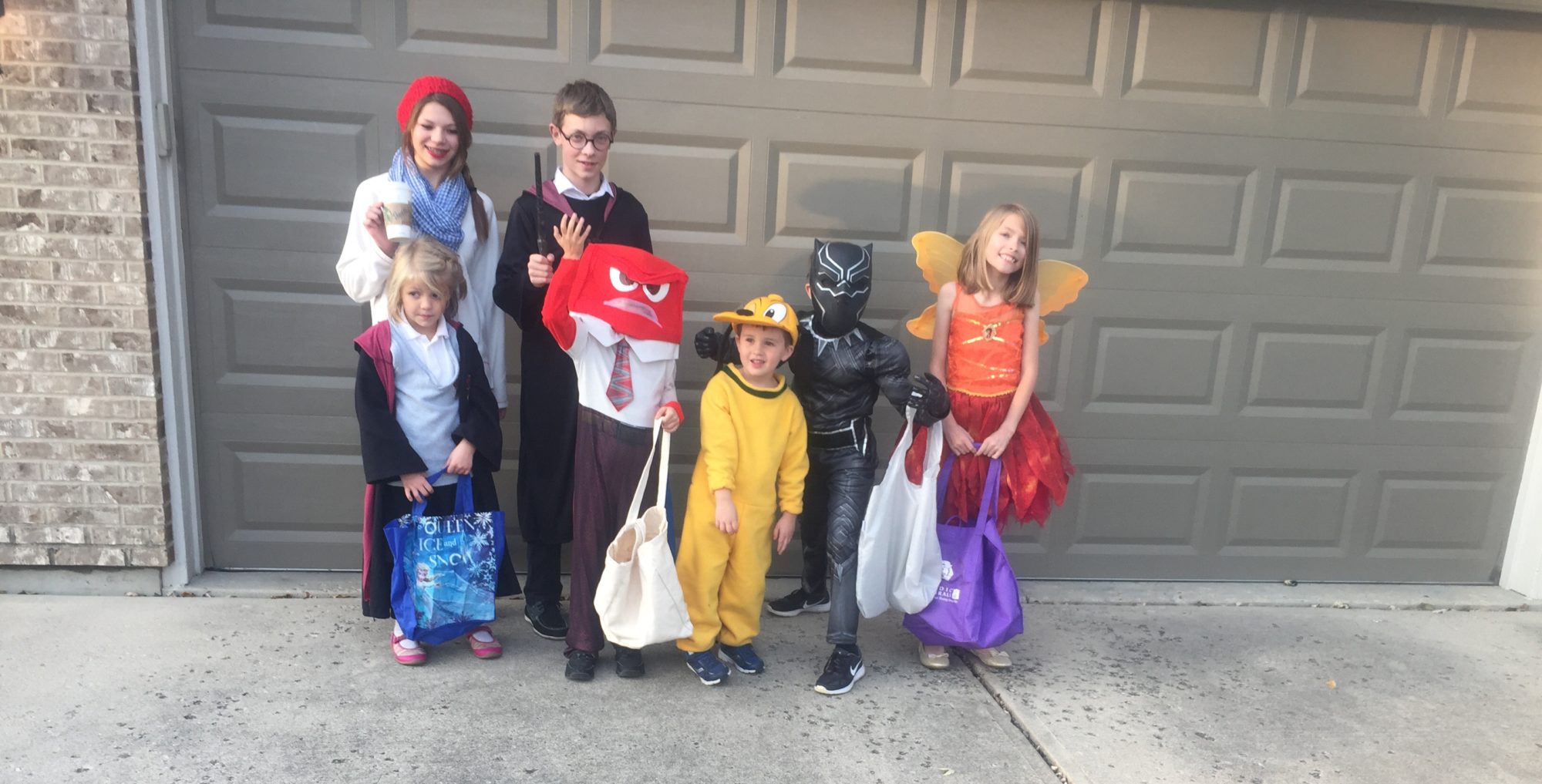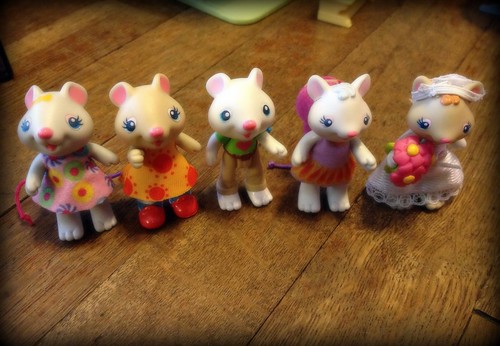The little girls & guy pictured above are some of Sophie’s favorite toys, from the “Stella Squeak” Fisher-Price line. But in addition to being her toys, they were also valuable tools I used at home to supplement her speech therapy. I used these to teach her spatial vocabulary – concepts such as behind, in front of, between, next to, under, on top of, etc. Here are a couple of ways to teach these words and concepts to your kiddo using toys.
The first exercise Sophie and I used for learning spatial concepts included a prop – in our case, an old Halloween trick-or-treat bucket -we called it “the Bucket game” (creative right!?). Using her favorite toy mouse, Stella Squeak, I’d place Stella in various positions around, on top of, under, next to the bucket, explaining as I did, “Stella is on top of the bucket. Now, Stella is under the bucket.” After I went through all the spatial positions, I’d give the toy to Sophie and ask her, “Can you put Stella next to the bucket? Can you put Stella in front of the bucket?” Right answers were praised and incorrect answers were merely corrected with a cheerful, “No, that’s _________. Here’s _________ the bucket.”
The other exercise we used her toys for involved all the little mice pictured above. Sophie knew all the names of her mice, (Candice, Stella, Barry, Priscilla, and Juliet, FYI), and so I’d put three of them in a line and say, “Sophie, who is between?” or put one in front of the group and say, “Sophie, who is in front?” After a few turns of me asking her to show me the correct answer, I’d give her one of the mice and say, “Sophie, put Stella between Priscilla and Candice.” or “Sophie, put Stella next to Juliet.”

Another really fun activity which Sophie and I did NOT do at home, but you can, is to hunt for items. Sophie’s SLP did this with her often at therapy so we didn’t repeat the activity at home, but it is a great one. Simply hide objects where they can be easily found – toys, whatever you want to use. (Sophie’s SLP used plastic eggs.) Then sing “a-hunting we will go” while the child looks for the objects. When he or she finds one, have them tell you WHERE they found it using spatial terms. “Where did you find the egg?” “I found it behind the pillow!’ or “I found it next to the lamp.” Sophie’s SLP put little treats in the eggs which made them extra-fun to hunt for. When she had found them all she got to open them up.
Those are just a couple of ideas on how to teach your kiddo spatial vocabulary at home! Even if your child is not speech-delayed, it can be a fun way to play and learn!



Bald dolls, gotta love it!
UP
The preschool teacher in me says,”Great job”!
I would be interested sometime in hearing some suggestions about improving conversational skills. I think I remember you said that was something that Sophie worked on. My son (age 4) has a good vocab and reasonably good pronunciation (can’t do R’s), and can form very developed long sentences, but he is not good at having a sustained back-and-forth conversation with someone. He will often just ignore the person or insert non-sequiters. He is not at all interested in answering questions about his day or activities he has done. He does not tell a story with a logical beginning, midddle and end. He does fine with factual answers like What color is this? or Where is your jacket?
Laurel, I will email you with some activity ideas! Teaching conversation, sequencing, and storytelling can be challenging. But Sophie didn’t *love* it so we had to work on it quite a bit and I have several ideas which I’ll email you tomorrow. Great question!
What age did you start this with Sophie?
Hi Jennifer! I started working with her at home when she was 3 & a half, I doubt we got to spatial vocab before she was four. She had a pretty significant delay and was in therapy for 18 months.